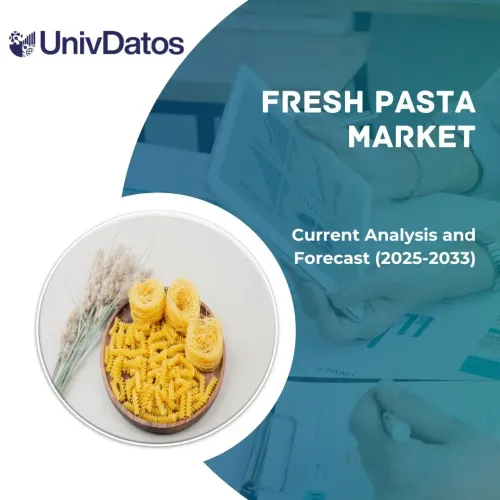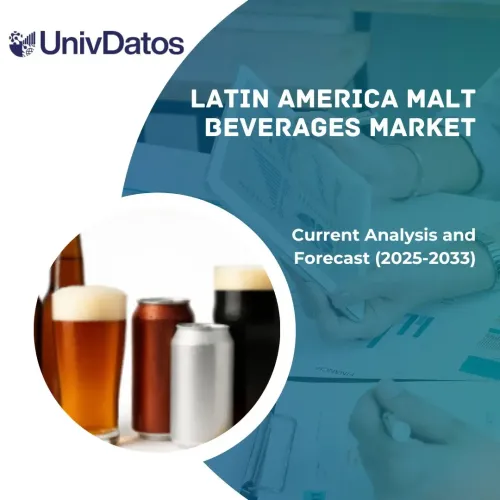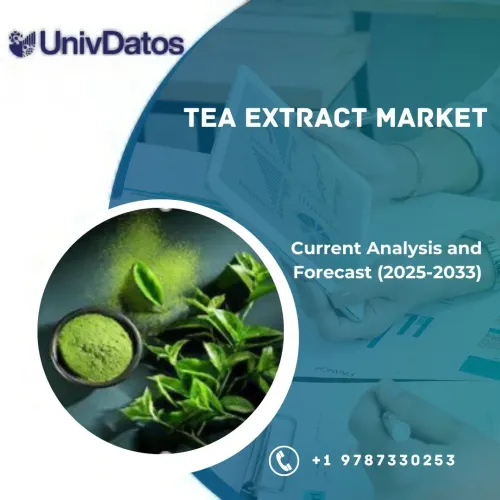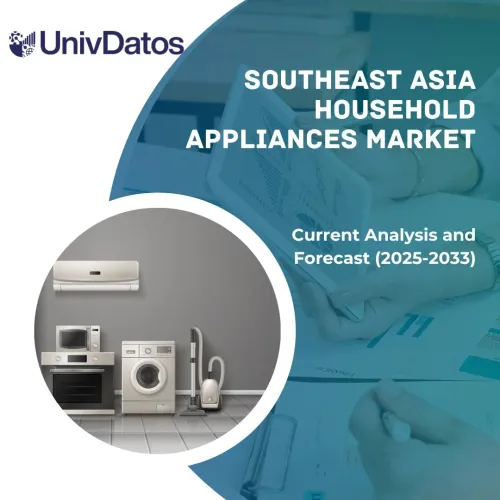- Home
- About Us
- Industry
- Services
- Reading
- Contact Us
Industrial Sugar Market: Current Analysis and Forecast (2021-2027)
Emphasis on Type (White, Brown, Liquid); Form (Granulated, Powdered & Syrup); Application (Dairy, Bakery & Confectionery, Beverages, Pharmaceuticals, Other Food Items); Source (Cane Sugar, Beet Sugar); and Region/Country
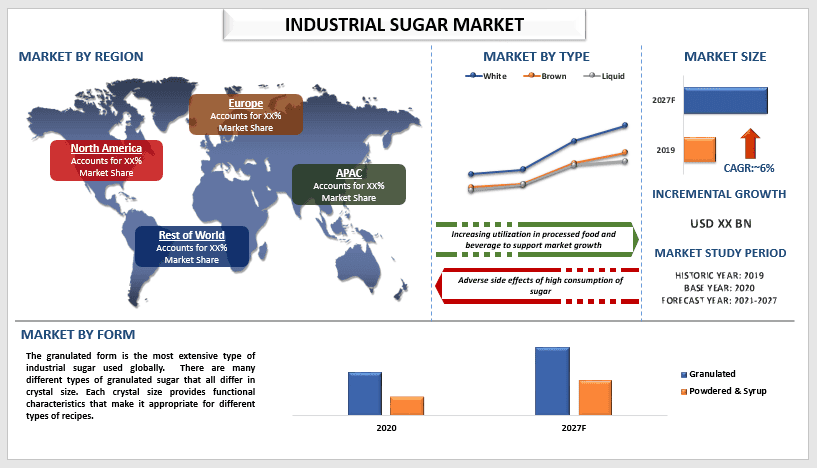
Rising disposable income, an increasing culture of partying out, and the surging consumption of non-alcoholic beverages are some of the factors that are contributing to the growing market of industrial sugar across the globe. As per the World Agricultural Supply and Demand, the sugar supply in the united states has increased by 45,434 short tons in Feb in 2021-22, as compared to January 2022. Furthermore, as per the American Sugar Alliance, sugar is produced on farms in 14 U.S. states. However, there are sugar distribution centers in 24 states and sugar beet factories in about nine states. An estimated US$3.36 billion flows into the United States solely from Minnesota’s sugar production industry. The sugar industry also creates about 28,021 jobs in Minnesota. New York is a state that does not produce or grow sugarcane anywhere within the state; however, New York is still responsible for US$292 million in revenue from the sugar industry.
The Global Industrial Sugar Market is expected to register a CAGR of around 6% over the period of 2021-2027. Mounting sugarcane production, developments in the industrial beet sugar industry, and consumption habits of ready-to-eat goods and beverages are some of the prominent factors, that are contributing to the market growth of industrial sugar. As per OECD-FAO, Sugarcane will continue to account for around 86% of sugar crops, and sugar beet will make up the remainder. Sugarcane production is projected to grow by 1% p.a. and reach 1 960 Mt by 2030.
As of 2020, world sugar production is projected to increase at a stronger average growth rate than in the previous decade (1.4% vs 0.3% p.a.), responding to attractive sugar prices due to steady growth in global demand. Most production increases are expected to occur in developing countries, which are projected to represent 79% of global sugar production by 2030 (compared to 76% in the base period).
Suedzucker AG, Associated British Foods Plc, Tereos Internacional SA, Mitr Phol Sugar Corporation Limited, Louis Dreyfus Holding B.V., Wilmar International Limited, American, Crystal Sugar Company, E.I.D.-Parry (India) Limited, Cargill, Inc., etc., are some of the key players in the market. Several M&As along with partnerships have been undertaken by these players to facilitate customers with hi-tech and innovative products/technologies.
Insights Presented in the Report
“Amongst type, white sugar category accounted for the majority share in the market in 2020”
Based on the type, the market is fragmented into white, brown, and liquid. The white sugar segment grabbed a considerable market share in 2020. The growing demand for bakery products and confectionery items among millenniums is contributing to the market growth. Also, white sugar is widely used in the food manufacturing and bakery sectors. The fine granules found in white sugars are perfect for cooking and baking. They are also the most popular and are utilized in household kitchens, bakeries, cafes, restaurants, and food processing facilities. However, the brown sugar segment would witness the highest CAGR during the forthcoming years as brown sugar contains more minerals while liquid sugars are mainly used to add taste and color to baked goods. These also help prevent foods from drying out and extending their shelf life.
“Amongst application, beverage segment is expected to witness highest CAGR during the forecast period”
Based on the application, the market is segmented into dairy, bakery& confectionery, beverages, pharmaceuticals, and other food items. The bakery and confectionery segment grabbed a significant market share owing to the growing popularity of confectioneries in the countries such as India, China, Indonesia, and UAE owing to the promulgating disposable income as consumers are ready to pay more for high-quality, tasty, and flavorful products.
“Amongst source, sugarcane segment accounted for the majority share in the market in 2020”
Based on the source, the market is fragmented into cane sugar and beet sugar. The sugarcane segment grabbed a considerable market share in 2020. Sugarcane is the primary crop used for sugar production and accounts for around 86% of the total production of sugar.
“North America to witness significant growth during the forecast period”
For a better understanding of the market adoption of the Industrial Sugar market, the market is analyzed based on its worldwide presence in the countries such as North America (the United States and Canada), Europe (Germany, France, Italy, Spain, United Kingdom, and Rest of Europe), Asia-Pacific (China, Japan, India, Australia, and Rest of APAC), and Rest of World. Asia Pacific region grabbed the major market for the Industrial Sugar Market industry in 2020. However, the North America region would witness a considerable CAGR during the forthcoming years.
Reasons to buy this report:
- The study includes market sizing and forecasting analysis validated by authenticated key industry experts.
- The report presents a quick review of overall industry performance at one glance.
- The report covers an in-depth analysis of prominent industry peers with a primary focus on key business financials, product portfolios, expansion strategies, and recent developments.
- Detailed examination of drivers, restraints, key trends, and opportunities prevailing in the industry.
- The study comprehensively covers the market across different segments.
- Deep dive regional level analysis of the industry.
Customization Options:
The Global Industrial Sugar market can further be customized as per the requirement or any other market segment. Besides this, UMI understands that you may have your own business needs, hence feel free to connect with us to get a report that completely suits your requirements.
Table of Content
Research Methodology for the Global Industrial Sugar Market Analysis (2021-2027)
Analyzing the historical market, estimation of the current market, and forecasting the future market of the global industrial sugar market were the three major steps undertaken to create and analyze the adoption of industrial sugar in major regions globally. Exhaustive secondary research was conducted to collect the historical market numbers and estimate the current market size. Secondly, to validate these insights, numerous findings and assumptions were taken into consideration. Moreover, exhaustive primary interviews were also conducted, with industry experts across the value chain of the global industrial sugar market. Post assumption and validation of market numbers through primary interviews, we employed a top-down/bottom-up approach to forecasting the complete market size. Thereafter, market breakdown and data triangulation methods were adopted to estimate and analyze the market size of segments and sub-segments of the industry pertains to. Detailed methodology is explained below:
Analysis of Historical Market Size
Step 1: In-Depth Study of Secondary Sources:
Detail secondary study was conducted to obtain the historical market size of the industrial sugar market through company internal sources such as annual reports & financial statements, performance presentations, press releases, etc., and external sources including journals, news & articles, government publications, competitor publications, sector reports, third-party database, and other credible publications.
Step 2: Market Segmentation:
After obtaining the historical market size of the industrial sugar market, we conducted a detailed secondary analysis to gather historical market insights and share for different segments & sub-segments for major regions. Major segments included in the report are type, form, application, and source. Further country-level analyses were conducted to evaluate the overall adoption of Industrial Sugar in that region.
Step 3: Factor Analysis:
After acquiring the historical market size of different segments and sub-segments, we conducted a detailed factor analysis to estimate the current market size of the industrial sugar market. Further, we conducted factor analysis using dependent and independent variables such as Increasing demand for bakery and confectionery products, proliferating demand for healthy beverages, etc., A thorough analysis was conducted for demand and supply-side scenarios considering top partnerships, mergers and acquisitions, business expansion, and product launches in the Industrial Sugar market sector across the globe.
Current Market Size Estimate & Forecast
Current Market Sizing: Based on actionable insights from the above 3 steps, we arrived at the current market size, key players in the global Industrial Sugar market, and market shares of the segments. All the required percentage shares split, and market breakdowns were determined using the above-mentioned secondary approach and were verified through primary interviews.
Estimation & Forecasting: For market estimation and forecast, weights were assigned to different factors including drivers & trends, restraints, and opportunities available for the stakeholders. After analyzing these factors, relevant forecasting techniques i.e., the top-down/bottom-up approach were applied to arrive at the market forecast about 2027 for different segments and sub-segments across the major markets globally. The research methodology adopted to estimate the market size encompasses:
- The industry’s market size, in terms of revenue (USD) and the adoption rate of the industrial Sugar market across the major markets domestically
- All percentage shares, splits, and breakdowns of market segments and sub-segments
- Key players in the global Industrial Sugar market in terms of solutions offered. Also, the growth strategies adopted by these players to compete in the fast-growing market
Market Size and Share Validation
Primary Research: In-depth interviews were conducted with the Key Opinion Leaders (KOLs) including Top Level Executives (CXO/VPs, Sales Head, Marketing Head, Operational Head, Regional Head, Country Head, etc.) across major regions. Primary research findings were then summarized, and statistical analysis was performed to prove the stated hypothesis. Inputs from primary research were consolidated with secondary findings, hence turning information into actionable insights.
Split of Primary Participants in Different Regions
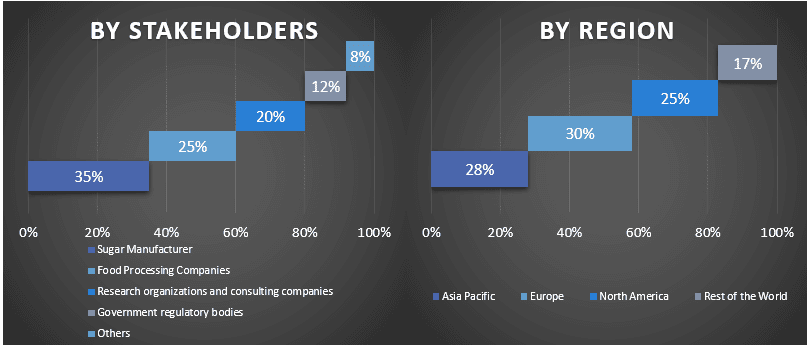
Market Engineering
The data triangulation technique was employed to complete the overall market estimation and to arrive at precise statistical numbers for each segment and sub-segment of the global Industrial Sugar market. Data was split into several segments & sub-segments post studying various parameters and trends in the areas of type, form, application, and source in the global Industrial Sugar market.
The main objective of the Global Industrial Sugar Market Study
The current & future market trends of the global Industrial Sugar market were pinpointed in the study. Investors can gain strategic insights to base their discretion for investments on the qualitative and quantitative analysis performed in the study. Current and future market trends determined the overall attractiveness of the market at a regional level, providing a platform for the industrial participant to exploit the untapped market to benefit from a first-mover advantage. Other quantitative goals of the studies include:
- Analyze the current and forecast market size of the Industrial Sugar market in terms of value (USD). Also, analyze the current and forecast market size of different segments and sub-segments
- Segments in the study include areas of type, form, application, and source
- Define and analysis of the regulatory framework for the Industrial Sugar market industry
- Analyze the value chain involved with the presence of various intermediaries, along with analyzing customer and competitor behaviors of the industry.
- Analyze the current and forecast market size of the Industrial Sugar market for the major region.
- Major countries of regions studied in the report include Asia Pacific, Europe, North America, and the Rest of the world.
- Company profiles of the Industrial Sugar market and the growth strategies adopted by the market players to sustain in the fast-growing market
- Deep dive regional level analysis of the industry
Related Reports
Customers who bought this item also bought

